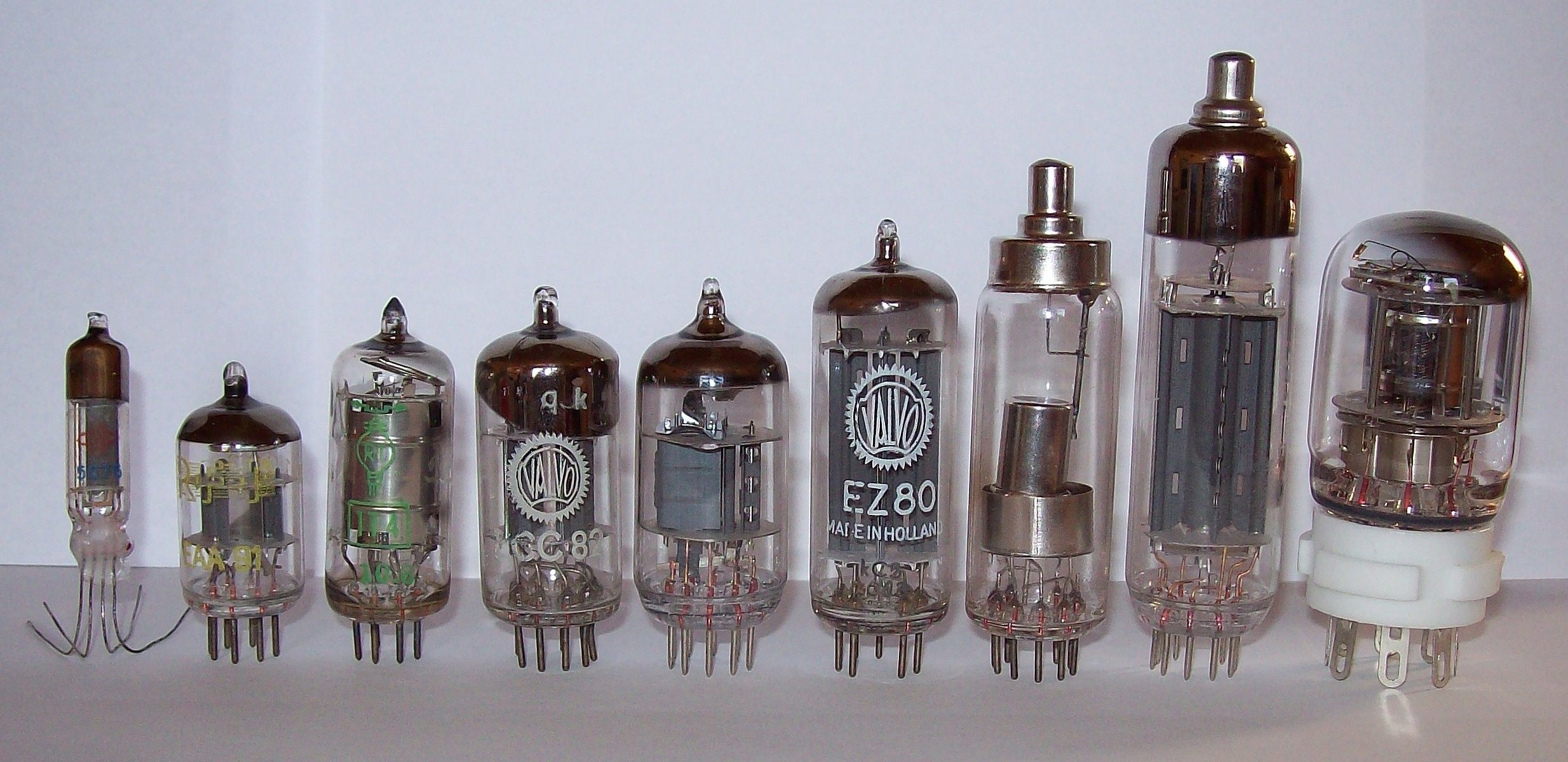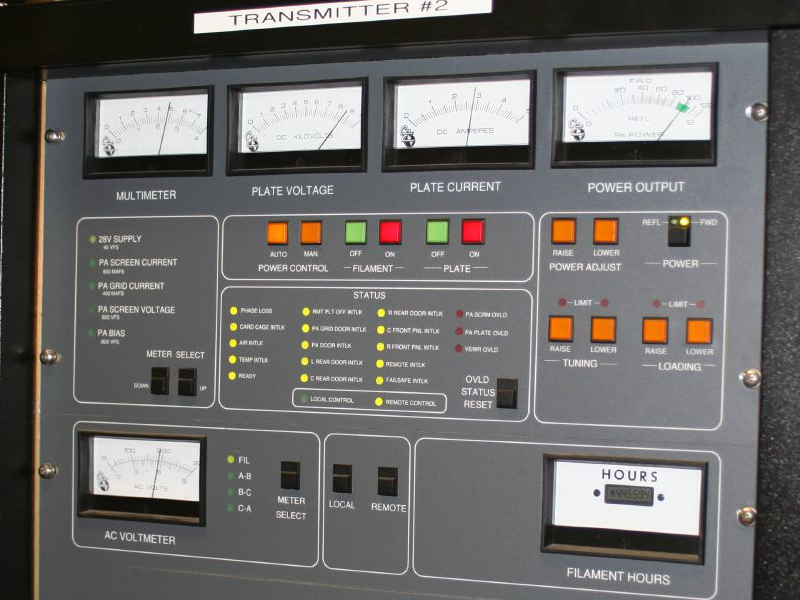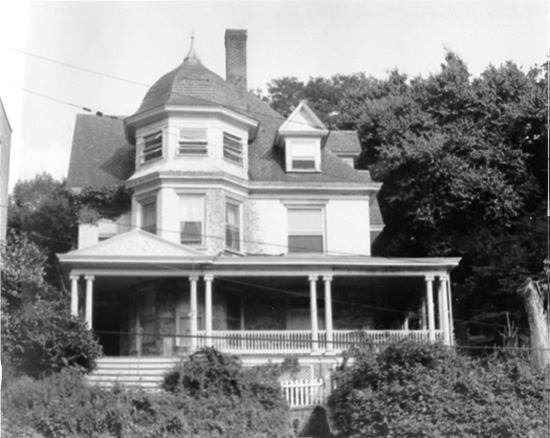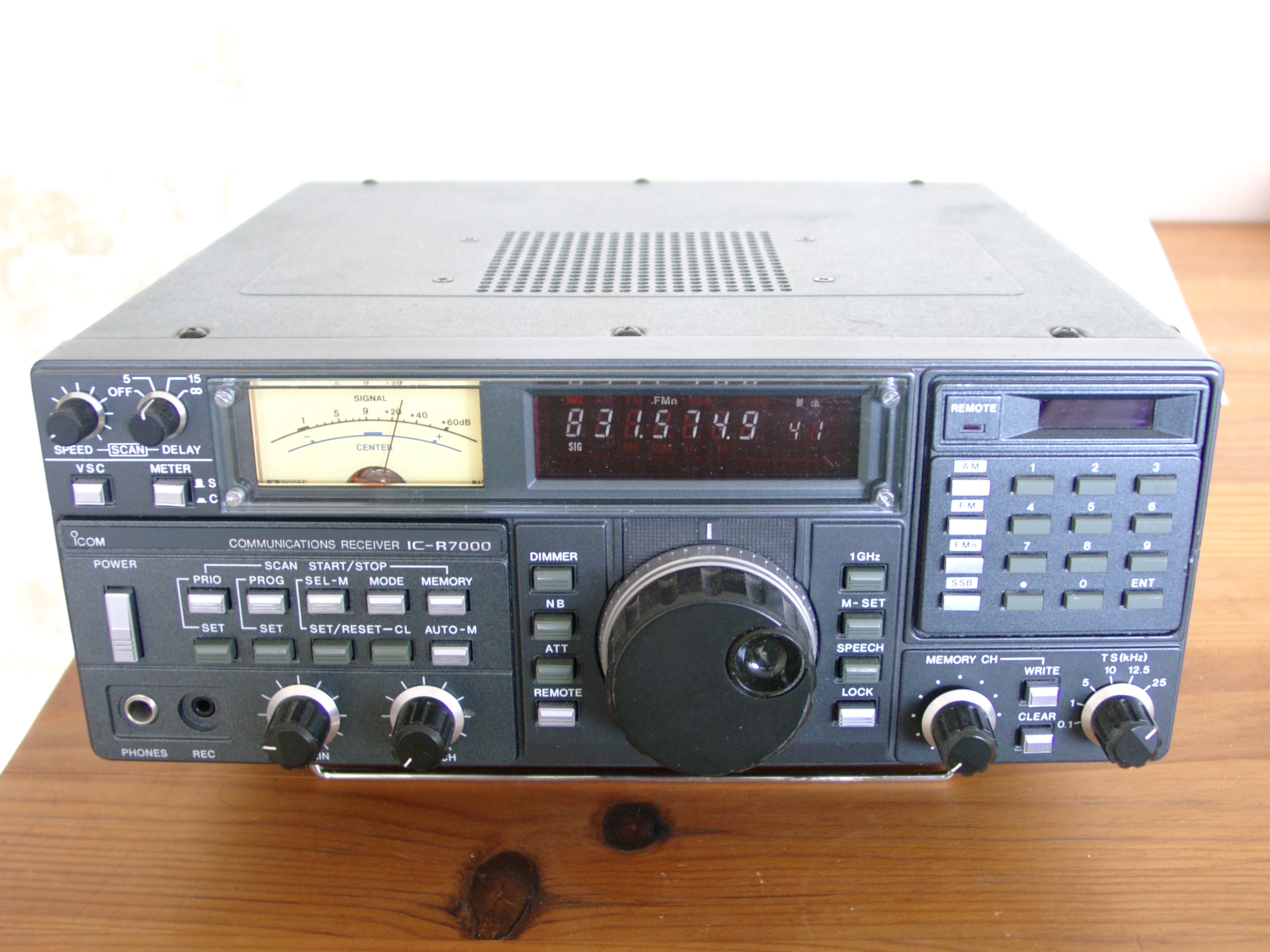|
Neutrodyne
The Neutrodyne radio receiver, invented in 1922 by Louis Hazeltine, was a particular type of tuned radio frequency (TRF) receiver, in which the instability-causing inter-electrode capacitance of the triode RF tubes is cancelled out or "neutralized"US Patent No. 1450080, Louis Alan Hazeltine "Method and electric circuit arrangement for neutralizing capacity coupling" filed August 7, 1919; granted March 27, 1923 to prevent parasitic oscillations which caused "squealing" or "howling" noises in the speakers of early radio sets. In most designs, a small extra winding on each of the RF amplifiers' tuned anode coils was used to generate a small antiphase signal, which could be adjusted by special variable trim capacitors to cancel out the stray signal coupled to the grid via plate-to-grid capacitance. The Neutrodyne circuit was popular in radio receivers until the 1930s, when it was superseded by the superheterodyne receiver. History The circuit was developed about 1922 by Haro ... [...More Info...] [...Related Items...] OR: [Wikipedia] [Google] [Baidu] |
Louis Alan Hazeltine
Louis Alan Hazeltine (August 7, 1886 – May 24, 1964) was an engineer and physicist, the inventor of the Neutrodyne circuit, and the Hazeltine-Fremodyne Superregenerative circuit. He was the founder of the Hazeltine Corporation. Biography Louis Alan Hazeltine was born in Morristown, New Jersey, in 1886 and attended the Stevens Institute of Technology in Hoboken, New Jersey, majoring in electrical engineering. He graduated in 1906 and accepted a job with General Electric corporation. Hazeltine returned to Stevens to teach, eventually becoming chair of the electrical engineering department in 1917. The following year he became a consultant for the United States Navy. The Navy job eventually parlayed into a position as an advisor to the U.S. government on radio broadcasting regulation, and later, a position on the National Defense Research Committee during World War II. Hazeltine was president of the Institute of Radio Engineers The Institute of Radio Engineers (IRE) was ... [...More Info...] [...Related Items...] OR: [Wikipedia] [Google] [Baidu] |
Tuned Radio Frequency Receiver
A tuned radio frequency receiver (or TRF receiver) is a type of radio receiver that is composed of one or more tuned radio frequency (RF) amplifier stages followed by a detector ( demodulator) circuit to extract the audio signal and usually an audio frequency amplifier. This type of receiver was popular in the 1920s. Early examples could be tedious to operate because when tuning in a station each stage had to be individually adjusted to the station's frequency, but later models had ganged tuning, the tuning mechanisms of all stages being linked together, and operated by just one control knob. By the mid 1930s, it was replaced by the superheterodyne receiver patented by Edwin Armstrong. Background The TRF receiver was patented in 1916 by Ernst Alexanderson. His concept was that each stage would amplify the desired signal while reducing the interfering ones. Multiple stages of RF amplification would make the radio more sensitive to weak stations, and the multiple tuned ... [...More Info...] [...Related Items...] OR: [Wikipedia] [Google] [Baidu] |
Parasitic Oscillation
Parasitic oscillation is an undesirable electronic oscillation (cyclic variation in output voltage or current) in an electronic or digital device. It is often caused by feedback in an amplifying device. The problem occurs notably in RF, audio, and other electronic amplifiers as well as in digital signal processing. It is one of the fundamental issues addressed by control theory. Parasitic oscillation is undesirable for several reasons. The oscillations may be coupled into other circuits or radiate as radio waves, causing electromagnetic interference (EMI) to other devices. In audio systems, parasitic oscillations can sometimes be heard as annoying sounds in the speakers or earphones. The oscillations waste power and may cause undesirable heating. For example, an audio power amplifier that goes into parasitic oscillation may generate enough power to damage connected speakers. A circuit that is oscillating will not amplify linearly, so desired signals passing through the stage w ... [...More Info...] [...Related Items...] OR: [Wikipedia] [Google] [Baidu] |
Miller Effect
In electronics, the Miller effect (named after its discoverer John Milton Miller) accounts for the increase in the equivalent input capacitance of an inverting voltage amplifier due to amplification of the effect of capacitance between the amplifier's input and output terminals, and is given by :C_=C (1+A_v)\, where -A_v is the voltage gain of the inverting amplifier (A_v positive) and C is the feedback capacitance. Although the term ''Miller effect'' normally refers to capacitance, any impedance connected between the input and another node exhibiting gain can modify the amplifier input impedance via this effect. These properties of the Miller effect are generalized in the Miller theorem. The Miller capacitance due to undesired parasitic capacitance between the output and input of active devices like transistors and vacuum tubes is a major factor limiting their gain at high frequencies. History When Miller published his work in 1919, he was working on vacuum tube triodes. Th ... [...More Info...] [...Related Items...] OR: [Wikipedia] [Google] [Baidu] |
Vacuum Tube
A vacuum tube, electron tube, thermionic valve (British usage), or tube (North America) is a device that controls electric current flow in a high vacuum between electrodes to which an electric voltage, potential difference has been applied. It takes the form of an evacuated tubular envelope of glass or sometimes metal containing electrodes connected to external connection pins. The type known as a thermionic tube or thermionic valve utilizes thermionic emission of electrons from a hot cathode for fundamental Electronics, electronic functions such as signal amplifier, amplification and current Rectifier, rectification. Non-thermionic types such as vacuum phototubes achieve electron emission through the photoelectric effect, and are used for such purposes as the detection of light and measurement of its intensity. In both types the electrons are accelerated from the cathode to the anode by the electric field in the tube. The first, and simplest, vacuum tube, the diode or Flem ... [...More Info...] [...Related Items...] OR: [Wikipedia] [Google] [Baidu] |
Radio Transmitter
In electronics and telecommunications, a radio transmitter or just transmitter (often abbreviated as XMTR or TX in technical documents) is an electronic device which produces radio waves with an antenna with the purpose of signal transmission to a radio receiver. The transmitter itself generates a radio frequency alternating current, which is applied to the antenna. When excited by this alternating current, the antenna radiates radio waves. Transmitters are necessary component parts of all electronic devices that communicate by radio, such as radio (audio) and television broadcasting stations, cell phones, walkie-talkies, wireless computer networks, Bluetooth enabled devices, garage door openers, two-way radios in aircraft, ships, spacecraft, radar sets and navigational beacons. The term ''transmitter'' is usually limited to equipment that generates radio waves for communication purposes; or radiolocation, such as radar and navigational transmitters. Generators of radio ... [...More Info...] [...Related Items...] OR: [Wikipedia] [Google] [Baidu] |
Tetrode
A tetrode is a vacuum tube (called ''valve'' in British English) having four active electrodes. The four electrodes in order from the centre are: a thermionic cathode, first and second grids, and a plate electrode, plate (called ''anode'' in British English). There are several varieties of tetrodes, the most common being the screen-grid tube and the beam tetrode. In screen-grid tubes and beam tetrodes, the first grid is the control grid and the second grid is the screen grid. In other tetrodes one of the grids is a control grid, while the other may have a variety of functions. The tetrode was developed in the 1920s by adding an additional grid to the first amplifying vacuum tube, the triode, to correct limitations of the triode. During the period 1913 to 1927, three distinct types of tetrode valves appeared. All had a normal control grid whose function was to act as a primary control for current passing through the tube, but they differed according to the intended function of ... [...More Info...] [...Related Items...] OR: [Wikipedia] [Google] [Baidu] |
Edwin Armstrong
Edwin Howard Armstrong (December 18, 1890 – February 1, 1954) was an American electrical engineer and inventor who developed FM (frequency modulation) radio and the superheterodyne receiver system. He held 42 patents and received numerous awards, including the first Medal of Honor awarded by the Institute of Radio Engineers (now IEEE), the French Legion of Honor, the 1941 Franklin Medal and the 1942 Edison Medal. He achieved the rank of major in the U.S. Army Signal Corps during World War I and was often referred to as "Major Armstrong" during his career. He was inducted into the National Inventors Hall of Fame and included in the International Telecommunication Union's roster of great inventors. He was inducted into the Wireless Hall of Fame posthumously in 2001. Armstrong attended Columbia University, and served as a professor there for most of his life. Armstrong is also noted for his legal battles with Lee de Forest and David Sarnoff, two other key figures in develop ... [...More Info...] [...Related Items...] OR: [Wikipedia] [Google] [Baidu] |
Radio Receiver
In radio communications, a radio receiver, also known as a receiver, a wireless, or simply a radio, is an electronic device that receives radio waves and converts the information carried by them to a usable form. It is used with an antenna. The antenna intercepts radio waves (electromagnetic waves of radio frequency) and converts them to tiny alternating currents which are applied to the receiver, and the receiver extracts the desired information. The receiver uses electronic filters to separate the desired radio frequency signal from all the other signals picked up by the antenna, an electronic amplifier to increase the power of the signal for further processing, and finally recovers the desired information through demodulation. Radio receivers are essential components of all systems based on radio technology. The information produced by the receiver may be in the form of sound, video (television), or digital data. A radio receiver may be a separate piece of electronic equ ... [...More Info...] [...Related Items...] OR: [Wikipedia] [Google] [Baidu] |
Oscillation
Oscillation is the repetitive or periodic variation, typically in time, of some measure about a central value (often a point of equilibrium) or between two or more different states. Familiar examples of oscillation include a swinging pendulum and alternating current. Oscillations can be used in physics to approximate complex interactions, such as those between atoms. Oscillations occur not only in mechanical systems but also in dynamic systems in virtually every area of science: for example the beating of the human heart (for circulation), business cycles in economics, predator–prey population cycles in ecology, geothermal geysers in geology, vibration of strings in guitar and other string instruments, periodic firing of nerve cells in the brain, and the periodic swelling of Cepheid variable stars in astronomy. The term ''vibration'' is precisely used to describe a mechanical oscillation. Oscillation, especially rapid oscillation, may be an undesirable phenomenon in ... [...More Info...] [...Related Items...] OR: [Wikipedia] [Google] [Baidu] |
Tuned Amplifier
A tuned amplifier is an electronic amplifier which includes bandpass filtering components within the amplifier circuitry. They are widely used in a variety of wireless applications. Schemes There are several tuning schemes in use, * Staggered tuning where each amplifier stage is tuned to a slightly different frequency. * Synchronous tuning (explained in more detail in the staggered tuning article) where each amplifier stage is tuned identically. This scheme maximises the amplifier gain but has narrower bandwidth than staggered tuning. * Double-tuned amplifier. This scheme is used on amplifier stages that are transformer-coupled rather than capacitor coupled. Both the primary and secondary coils of the transformer are tuned. This has the effect of widening the bandwidth. Other tuning schemes are sometimes called single-tuned to distinguish them. Variable tuning The radio frequency, RF amplifier stages of radio receivers require variable tuning to select the station, usu ... [...More Info...] [...Related Items...] OR: [Wikipedia] [Google] [Baidu] |






